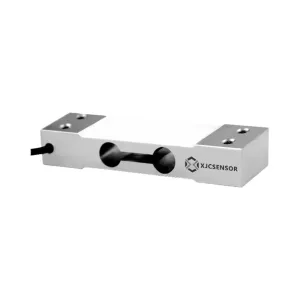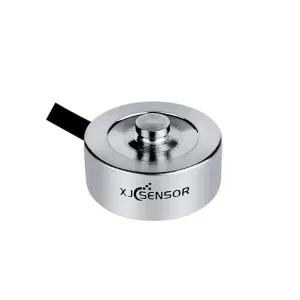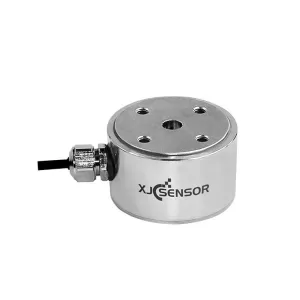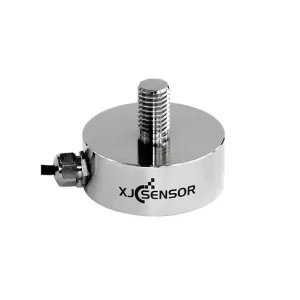Load cells for sale | XJCSENSOR
Welcome to XJCSENSOR, a leading load cell manufacturer specializing in the production of robust and precise load cells. As a trusted provider of customized and wholesale solutions, we are committed to meeting the unique needs of our customers. This web page is dedicated to showcasing our exceptional services, highlighting our strengths, and explaining why choosing XJCSENSOR as your load cell supplier is the ideal choice. Explore the wide range of benefits and services we offer to help you optimize your applications.
Load cells for sale
XJCSENSOR is your trusted partner for customized and wholesale load cell solutions. With our engineering excellence, precision manufacturing, and commitment to customer satisfaction, we deliver robust and precise load cells tailored to your specific requirements. Choose XJCSENSOR for reliable load cells that offer accuracy, durability, and compatibility across industries. Contact us today to discuss your load cell needs and experience the benefits of our exceptional services, collaborative approach, and industry-leading expertise.
Load Cell Installation and Maintenance:
Proper installation and regular maintenance are crucial for ensuring the optimal performance and longevity of load cells. Here are some key considerations:
Installation Guidelines:
- Mounting: Follow the manufacturer’s guidelines for proper mounting, considering factors such as load direction, stability, and accessibility.
- Alignment: Ensure that the load is applied in line with the central axis of the load cell to prevent side loading, which can affect measurement accuracy.
- Protection: Shield load cells from excessive heat, moisture, and corrosive substances that could compromise their performance. Choose load cells with appropriate ingress protection ratings based on your application requirements.
- Wiring: Carefully route and protect wiring connections to avoid damage from external forces, abrasion, or electrical interference.
Calibration and Verification:
- Calibration: Periodically calibrate load cells to maintain accurate measurements. Follow the manufacturer’s recommended calibration intervals and procedures, or consult a professional calibration service.
- Verification: Regularly verify the load cell’s accuracy using known weights or force standards. This process helps identify any drift or deviation from the expected readings and allows for necessary adjustments.
Cleaning and Maintenance:
- Cleanliness: Keep load cells clean by regularly removing dust, debris, or buildup that may affect their performance. Use gentle cleaning methods and non-abrasive materials to avoid damaging sensitive components.
- Inspection: Routinely inspect load cells for signs of wear, damage, or loose connections. Replace any worn-out or damaged parts promptly.
- Environmental Factors: Monitor and control environmental conditions such as temperature, humidity, and vibrations within the load cell’s specified limits to ensure accurate and reliable operation.
- Lubrication: If applicable, follow the manufacturer’s recommendations regarding lubrication of load cell mechanisms to maintain smooth operation.
Training and Documentation:
- Training: Provide appropriate training to personnel responsible for load cell installation, maintenance, and operation. Ensure they understand the correct procedures, safety protocols, and best practices.
- Documentation: Maintain a record of load cell installations, calibration dates, verification results, maintenance activities, and any issues encountered. This documentation helps track performance, troubleshoot problems, and ensure compliance with quality standards.
Proper installation, calibration, and maintenance are essential for maximizing the performance and lifespan of load cells. Adhering to recommended guidelines, conducting regular inspections, and following industry best practices will help ensure accurate measurements and reliable operation. At XJCSENSOR, we provide comprehensive documentation and support to assist you in optimizing your load cell installation and maintenance processes. Contact us today for more information on load cell installation and maintenance guidelines tailored to your specific needs.
Load Cell Troubleshooting:
While load cells are designed to be robust and reliable, occasional issues may arise that require troubleshooting. Here are some common problems and their potential solutions:
Zero Reading Drift:
- Ensure Proper Tare: Check if the load cell is properly tared or zeroed before taking measurements.
- Environmental Factors: Evaluate the environmental conditions, such as temperature fluctuations or vibrations, which could impact the zero reading stability. Take necessary measures to minimize these effects.
Inaccurate Readings:
- Overload Protection: Confirm that the load cell is not subjected to loads exceeding its rated capacity. Excessive loading can cause strain and affect accuracy.
- Misalignment: Verify that the load is applied centrally along the axis of the load cell. Any misalignment can introduce measurement errors.
- Check Wiring: Inspect wiring connections for any loose or damaged cables that could lead to signal disruptions. Reconnect or replace as needed.
- Calibration: If all other aspects are in order, consider calibrating the load cell to ensure accurate readings.
Electrical Noise Interference:
- Grounding: Properly ground the load cell and associated equipment to minimize electrical noise that can distort the signals.
- Shielding: Use shielded cables and minimize the distance between the load cell and the data acquisition system to reduce electromagnetic interference.
- Filtering: Employ signal filters or amplifiers to eliminate or reduce high-frequency noise that may affect the accuracy of load cell readings.
Mechanical Damage or Wear:
- Physical Inspection: Visually inspect the load cell for any visible damage, wear, or deformation. Replace or repair damaged components as required.
- Load Distribution: Ensure that the load is evenly distributed across the load cell’s sensing element. Uneven loading may cause mechanical stress and affect measurement accuracy.
Intermittent Readings:
- Check Connections: Verify all wiring connections for looseness or poor contact. Secure and tighten connections to ensure consistent signal transmission.
- Cable Integrity: Inspect cables for any signs of damage, such as fraying or exposed wires. Replace damaged cables promptly to maintain reliable operation.
Compatibility Issues:
- Signal Compatibility: Confirm that the load cell’s output signal matches the requirements of your data acquisition system or display device. Ensure proper signal conditioning if necessary.
If troubleshooting efforts do not resolve the issue or if you require further assistance, please reach out to our technical support team at XJCSENSOR. Our experts will provide guidance and help troubleshoot specific problems encountered with your load cells.





